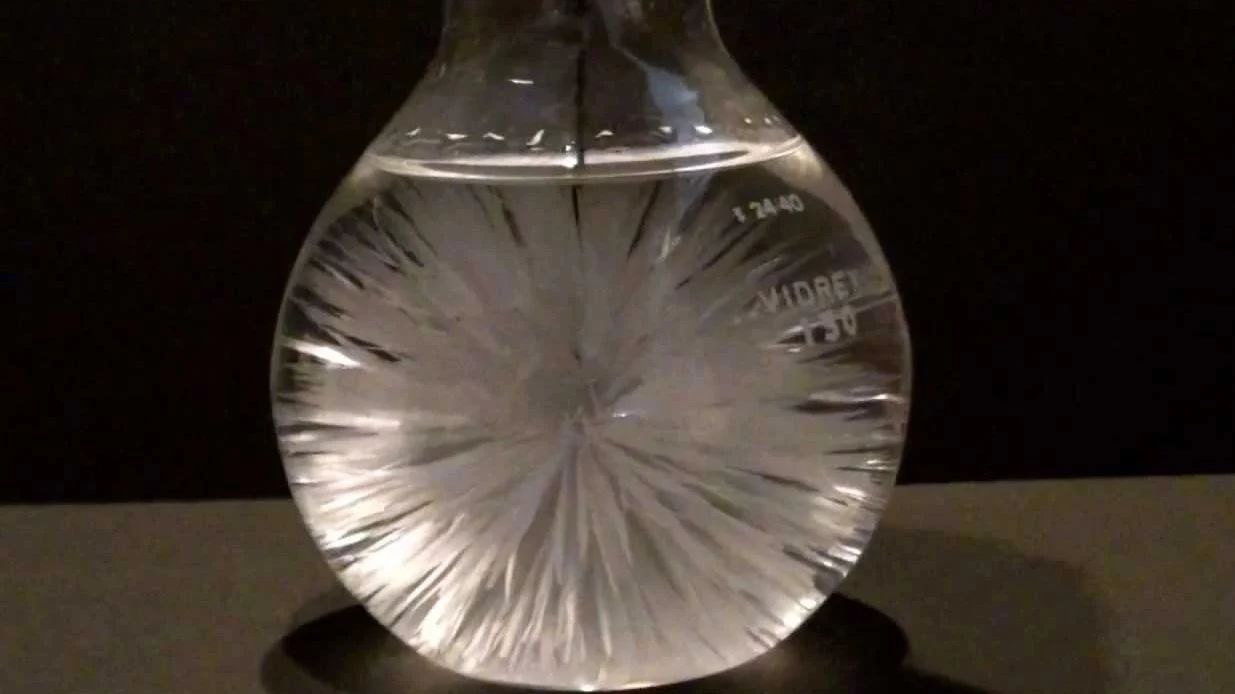
In order to get a good crystal, we must first stop it from crystallizing _ (: Crystal "∠) _
with a light poke at the transparent solution, a white needle-like crystal begins to form in the bottle. Eventually, the crystal fills the bottle, and the liquid becomes a solid completely.
this is the classic "hot ice" experiment: a concentrated supersaturated sodium acetate solution forms a crystal of sodium acetate hydrate, a process that gives off heat. When heated, the crystal water in hydrated sodium acetate is released to completely dissolve sodium acetate into liquid, and when cooling down, the crystal can be completely turned into solid, so it is particularly magical in many crystallization experiments.
recently I tried to do this experiment in order to make a beautiful crystal version. At present, although it is basically successful, the effect is not up to the ideal state _ (: anhydrous "∠) _
the following is my own version:
I used anhydrous sodium acetate to do this experiment. First weigh about 25 grams of anhydrous sodium acetate powder, then slowly add a small amount of water under the condition of heating in a water bath until it can be completely turned into a liquid (about 66 grams of water per 100 grams). Next, transfer the thick hot solution to a clean new container, wait for it to cool down and become supersaturated, and then add the condensation core (for example, in the video I threw a small piece of crystalline sodium acetate into it). You can see the crystal growing and extending rapidly (if you touch the wall of the container, you can still feel its exothermic effect).
this process is very simple, but it is actually a bit troublesome. The biggest problem is how to ensure that sodium acetate does not crystallize in advance during the cooling process. First of all, when heating, it is necessary to ensure that sodium acetate is completely turned into a solution, no solids can be left, and the containers used for cooling should be washed as clean as possible. But even so, unexpected crystallization still happens from time to time. I observed that the surface of the solution in the beaker often falls on a little bit of dust, which should be the culprit of early crystallization.
it's a pity that I don't have a super clean station here to avoid falling ash. So I tried a way to deal with the collapse: on the one hand, soak the beaker in cold water to cool it faster, on the other hand, always observe the surface of the beaker, when there is a place on the surface to begin to crystallize. just locally drop a drop of water to dissolve the crystal. In this way, the local solution on the surface becomes dilute, but because the diffusion is not so fast, the solution below actually remains supersaturated. Just hold on until it almost cools, and then put in the crystal seed, and then you get the above video _ (: "∠") _
, but the result of dripping is that the supersaturated solution will not become solid completely, and some solutions will be left.
next, we should try to improve it again. If you have any other suggestions, you can also share _ (: questions "∠) _
Video source: mike shin
Seek for svelte black and white bridesmaid dresses and shine your feminine charm? Once you make up your choice, relax, we will take care of everything.